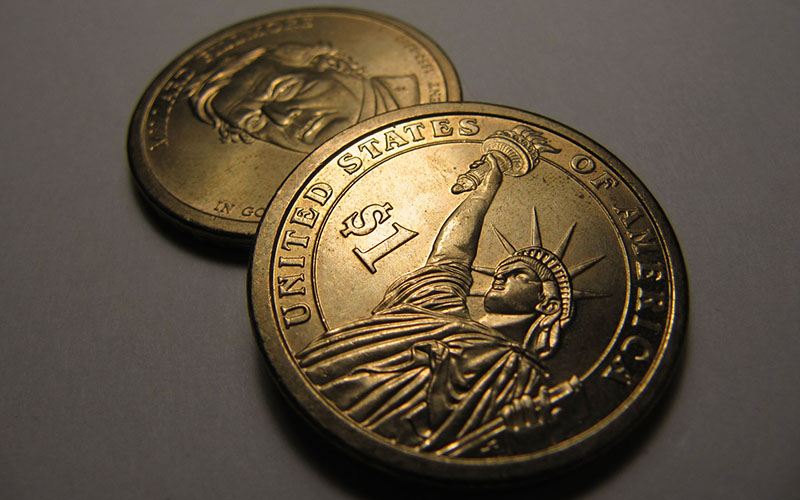
The Treasury said it stopped minting dollar coins some years ago because there was no demand. But advocates say coins would save billions in long-term production costs over dollar bills. (Photo by Don Buciak II via flickr/Creative Commons)

Sen. John McCain became the third Arizona lawmaker in the past 20 years to push for a dollar coin to replace the dollar bill, beginning with then-Rep. Jim Kolbe in 1991. (Photo by CheapFullCoverageAutoInsurance.com/Creative Commons)
WASHINGTON – Sen. John McCain calls his proposal to replace paper dollars with dollar coins “common sense” and “logical,” noting that it would save $4.4 billion on the cost of producing currency over 30 years.
For more than two decades now, the rest of Congress hasn’t seen the logic.
McCain became the third Arizona lawmaker since 1991 to push for elimination of the dollar bill in favor of the dollar coin last week when he introduced the Unified Savings and Accountability Act, which targets “government waste.”
Making the dollar-for-dollar switch is one of its recommendations.
“You’re taking one form of currency that disappears and is worn out and has to be discarded to another form of currency that lasts forever,” said McCain, who sponsored the bill with Sen. Mike Enzi, R-Wyoming. “It’s logical.”
It’s also the second try for McCain, who vowed this week to carry on the dollar coin “crusade” started by former Arizona Rep. Jim Kolbe.
Kolbe, a Republican who represented a large portion of southern Arizona for nearly two decades, is now co-chairman of the Dollar Coin Alliance. He was out of the country this week and not available for comment, but his alliance co-chair was eager to defend the proposal.
“When people understand that there are budgetary savings associated with converting … they support the idea with huge margins,” said former Rep. Jim Penny, a Democrat from Minnesota.
Penny said he teamed up with McCain on similar legislation “years ago,” when they were both part of the “Porkbusters Coalition” in the 1990s.
“I know he’s long been involved in efforts to shave spending,” Penny said in a phone interview Wednesday.
McCain points to a Government Accountability Office report, last updated in 2014, that said switching to a dollar coin would have an initial cost, but would have long-term savings of $4.4 billion.
The Dollar Coin Alliance says it costs about 18 cents to produce a coin, compared to about 5 cents for a dollar bill. But McCain said the coins are in circulation for nearly 35 years, as opposed to two to four years for the paper bill.
The U.S. Treasury declined comment on McCain’s bill, but said it stopped minting $1 coins in 2011 because of flagging demand – mostly from collectors.
The fight to make the transition happen has spanned more than two decades, beginning with Kolbe in 1991. That bill died in committee, as subsequent attempts in 1993 and 1995.
Rep. David Schweikert, R-Fountain Hills, tried in 2011 with the COINS Act, which would have phased out the paper dollar in favor of the coin. It got a subcommittee hearing but did not get out of committee.
In 2013, McCain and four other senators tried, and failed.
The GAO report cited by McCain in support of his latest bill said savings would have been greater had the measure passed in one of its earlier incarnations.
“The Federal Reserve has improved note-processing technologies, resulting in a longer lifespan for the $1 note,” the report says, noting that the savings would have been as much as $5.5 billion had the bill passed in 2011.
Penny could not explain the attraction Arizona lawmakers seem to have for the proposal. But he mused that Arizona is an “ore-extraction state,” which could be one driving factor “in terms of an an economic consideration” for one of the state’s major industries.
McCain reels off what he sees as the many legitmate reasons for switching do a dollar coin – but adds Penny’s possibly factor with a smile.
“Maybe they might use some copper,” McCain said with a laugh.